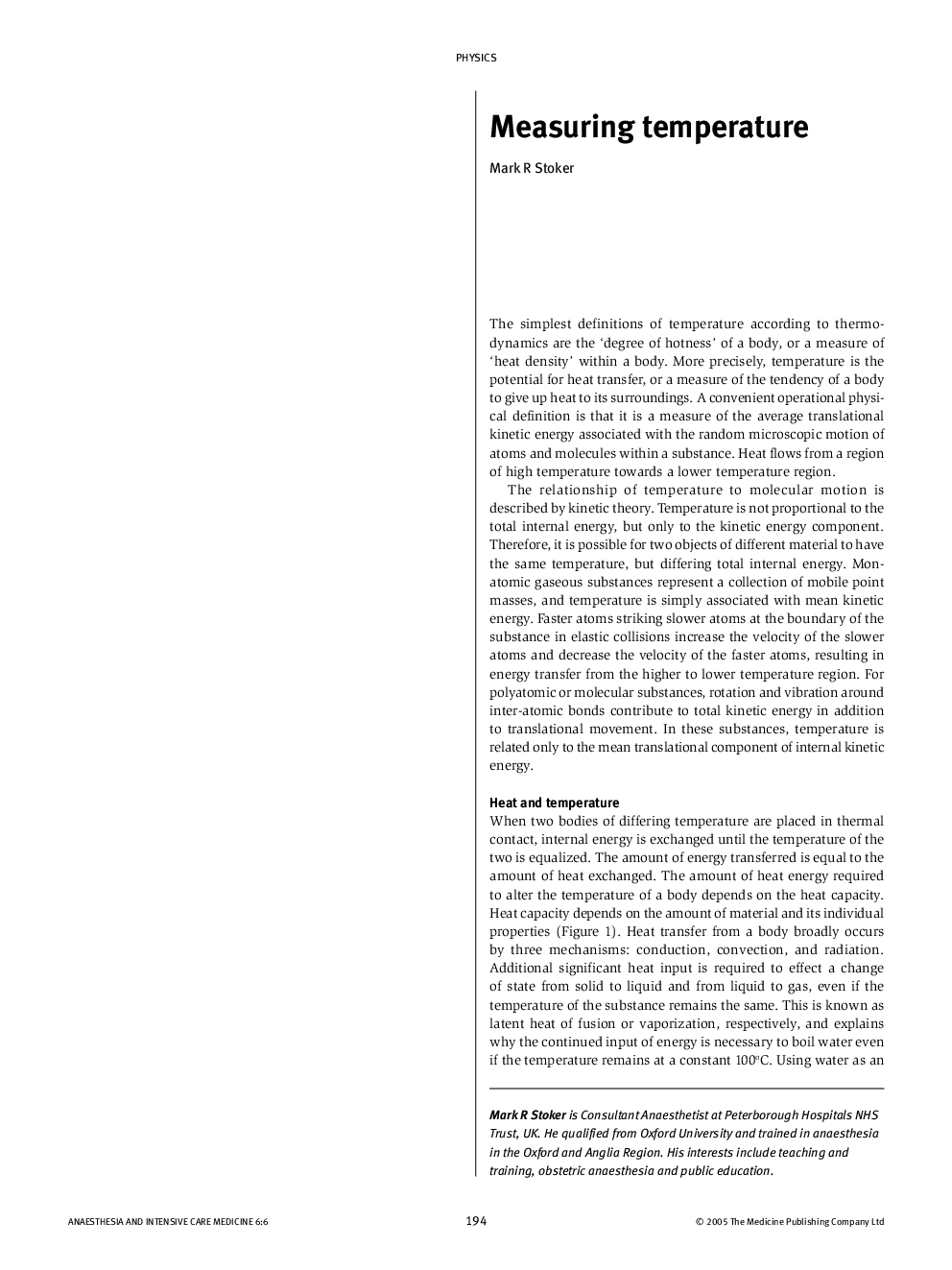| Article ID | Journal | Published Year | Pages | File Type |
|---|---|---|---|---|
| 9089879 | Anaesthesia & Intensive Care Medicine | 2005 | 5 Pages |
Abstract
Temperature is a measure of the mean translational kinetic energy associated with the random motion of atoms or molecules within a substance. Heat is the energy transferred between two bodies of differing temperature and flows from the higher temperature body to the lower, until equilibrium is reached. The Farenheit, Celsius and Kelvin scales are three temperature scales in common use. The Farenheit scale separates the freezing and boiling points of water by 180 degrees and the Celsius scale separates the same two fixed points by 100 degrees. The Kelvin thermodynamic scale is defined as the temperature difference between absolute zero and the triple point of water divided by 273.16. Modern thermometers are calibrated to the International Temperature Scale of 1990 (ITS-90), which defines 17 fixed points, of which the triple point of water is the ninth point. A thermometer is a device for estimating the temperature of a substance or body, and commonly utilizes a quantifiable and reproducible change in a physical property of the substance in response to temperature. Thermometers may be classified into contact and non-contact devices. The simplest use a change in physical state or density with temperature. A resistance temperature detector (metal wire) and thermistor utilize a change in electrical resistance, while a thermocouple generates a small emf when placed in a temperature gradient. Non-contact temperature measuring devices include the thermopile, optical pyrometer and radiation thermometer.
Keywords
Related Topics
Health Sciences
Medicine and Dentistry
Anesthesiology and Pain Medicine
Authors
Mark R Stoker,
